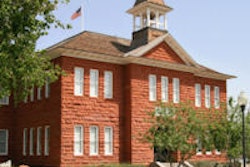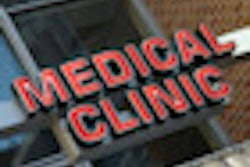
The bleak picture of oral health in West Virginia painted by the 2000 U.S. surgeon general's report on oral health hit state lawmakers and health providers hard. At 47.9%, West Virginia had the worst rate of endentulousness of adults older than age 65 of any state, while 33% of 15-year-olds had untreated caries, compared with the national average of 20%.
In recent years, the state has seen improvements. Using data from 2008, a report issued December 10 by the Centers for Disease Control and Prevention (CDC) lists the state's endentulous rate for adults age 65 and older at 38%. But it is still the highest in the U.S.
One reason for the improvement has been a coordinated response among federal, state, and local officials to address the problem. Solutions have ranged from establishing community-based clinics to partnering with churches to spread the word about the state's health problems and urging dental practitioners to accept more Medicaid and Children's Health Insurance Program (CHIP) patients.
Now officials are working to establish permanent and portable dental clinics in public schools in one of the state's most underserved regions.
"In southern West Virginia, what's referred to as the coal-field part of the state, the need for healthcare as a whole is very great," explained Wendy Mosteller, RDH, a hygienist and dental coordinator for the program run by Lincoln Primary Care, part of the Southern West Virginia Health System. "The idea behind putting clinics in schools is all about access."
Starting to expand
In the program's first year, the region has added four school-based federally qualified health centers, and the dental component is up and running at Guyan Valley Middle School in Branchland. Another at Chapmanville County High School in Lincoln County expects installation to be complete this month, and work has begun at one other site. Organizers have found ways to serve other schools as well.
"Our dentists can go to schools without onsite health centers to at least do cleanings," explained Kim Estep, regional chief of operations for Lincoln Primary Care and manager of the four school-based health centers. "To facilitate that, we have purchased two portable cleaning chairs."
— Kim Estep, Lincoln Primary Care
At the beginning of the school year, consent forms are sent out to parents, and any child with a signed one on file can receive treatment during the school day. "Previously, the parent would have to take the child out of school for at least half a day," Estep said. "With us, they can be seen for 30 minutes and then go right back to class."
In the dentist's chair, students are provided full preventive and restorative care. "They're doing extractions, fillings, anything where we can avoid sending them off for a referral," Mosteller said. "But we run into a lot of cases that are too severe for us to take care of in a school setting that must be referred to a periodontist or an endodontist. The parents, thus far, have been very good at taking the children to the referral appointments."
How parents handle their role in the process is a concern. Some lack transportation. Many are completely unfamiliar with dental care, which "absolutely" stems from a history of a lack of access to it, according to Mosteller.
"The counties in our area are medically underserved in rural populations, so there's a high volume of low-income children," Estep said. Consequently, the clinics accept Medicaid and CHIP payments.
"If they don't qualify, we have a sliding fee scale available," she said. "If there was a child that for some reason didn't fit into any of those options, we have some grant funding available that we've set aside to help offset some of the costs." These funds may also be applied to treatment from a specialist.
Highest caries rate
Of the three counties that will be the first to receive service, Lincoln and Mingo counties have five or fewer dentists each and Logan County has six to 10, according to the West Virginia Dental Association (WVDA).
"We started seeing statistics showing that Lincoln County has the greatest frequency of oral caries in the nation," Estep said. "The state didn't have an oral health plan, and in order to implement one they had to assess where it was at this particular stage. We saw a pretty grim picture."
The efforts gathered momentum when former West Virginia Gov. Joe Manchin III spoke with Anne B. Pope, the federal co-chair of the Appalachian Regional Commission (ARC), an economic development agency representing a partnership of federal, state, and local governments.
"Pope's father was a dentist, and they talked about how to take on the problem," said Bobbi Jo Muto, community rural health coordinator at Marshall University. "And then they approached the Marshall school of medicine about an initiative that would focus on the school-health delivery model."
The university agreed to participate, and in November 2008, the ARC and the Claude Worthington Benedum Foundation, a regional philanthropy, announced a $500,000 grant to fund the program for school-based dental clinics.
Marshall's role has been pivotal and ongoing, providing technical assistance, managing grants, and collecting data from grantees, Muto noted. It sent out a request for proposal to the entire state, resulting in 17 grantees.
"We were able to fund almost all the programs that applied," she said. "The grant review committee included the Board of Education, ARC, Benedum, Marshall's school of dentistry, the WVDA, and the West Virginia Dental Hygienists' Association to ensure fairness."
Overwhelming need
Mandatory data collection is among the grant's stipulations. "We're using the Centers for Disease Control's Epi Info program, their data collection database," Muto explained. "We actually have adapted it for our state and worked with the CDC to make it Web-based."
Another stipulation is that the program had to collaborate with a local dentist and the local dental society. "We didn't want anyone coming and cherry-picking patients or stealing patients," she said.
Southern West Virginia Health System, which already ran school health clinics, decided to add dental to their services, making them eligible for grant money. "The money would enable us to hire a hygienist part time and partner with a local dentist, per the guidelines," Estep said. "But in this area there were only three local dentists: one full-time and two part-time."
The need was much greater than the time that they could offer, and the parameters were changed to allow for the hiring of a full-time dentist, a full-time assistant, and a full-time hygienist in addition to the part-time hygienist.
"So far our team has only made it to one school in the county because the need there has been so great," Mosteller said. "I'd say we've treated between 150 and 200 students."
Despite the scope of the problem, the program's organizers remain optimistic. "We're just sorting it out as we go," Estep said. "It's been a definite learning process, but in the long run it will be so valuable to the students of West Virginia. Hopefully it can be a model for others down the line."
Copyright © 2010 DrBicuspid.com



















